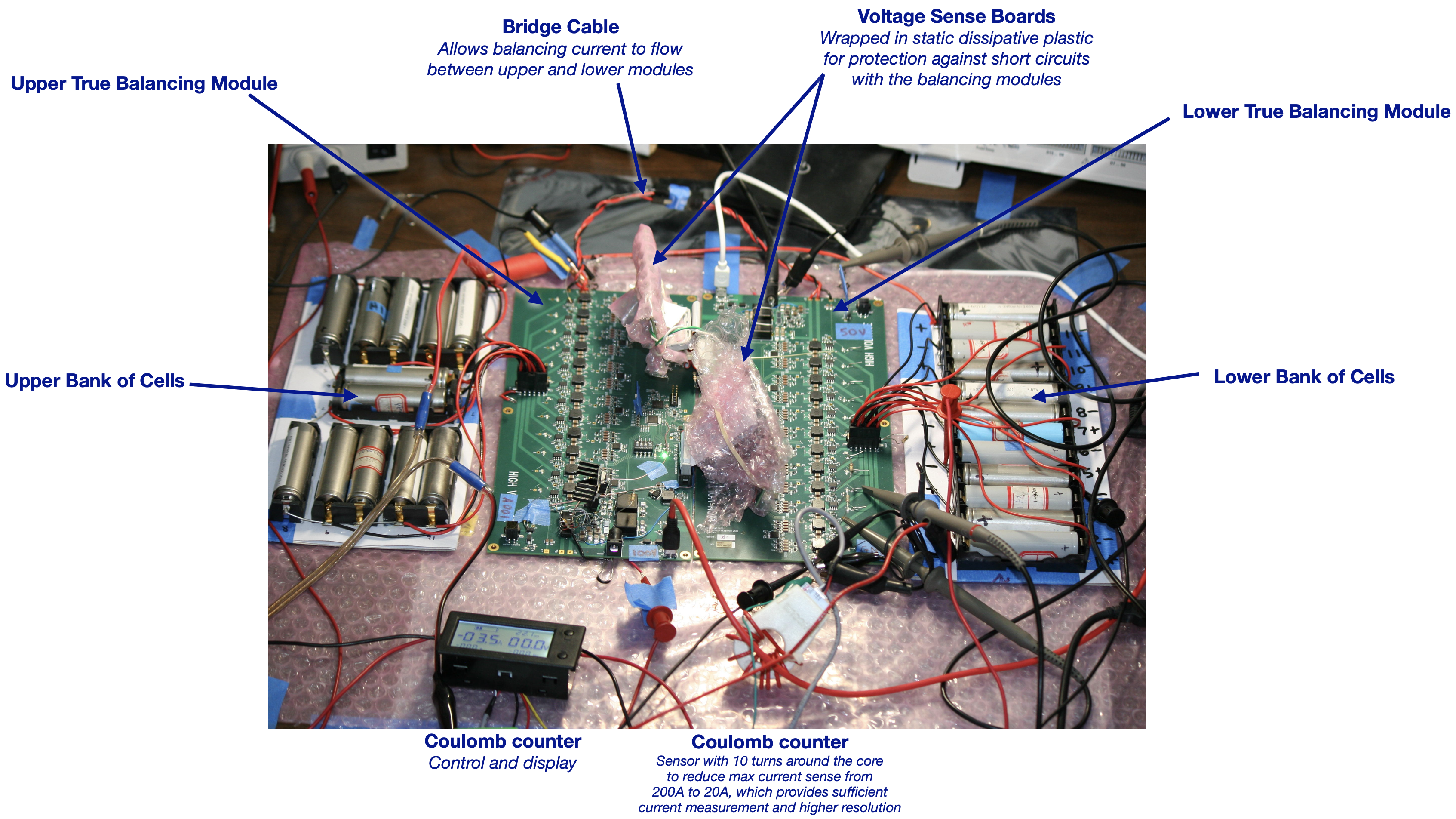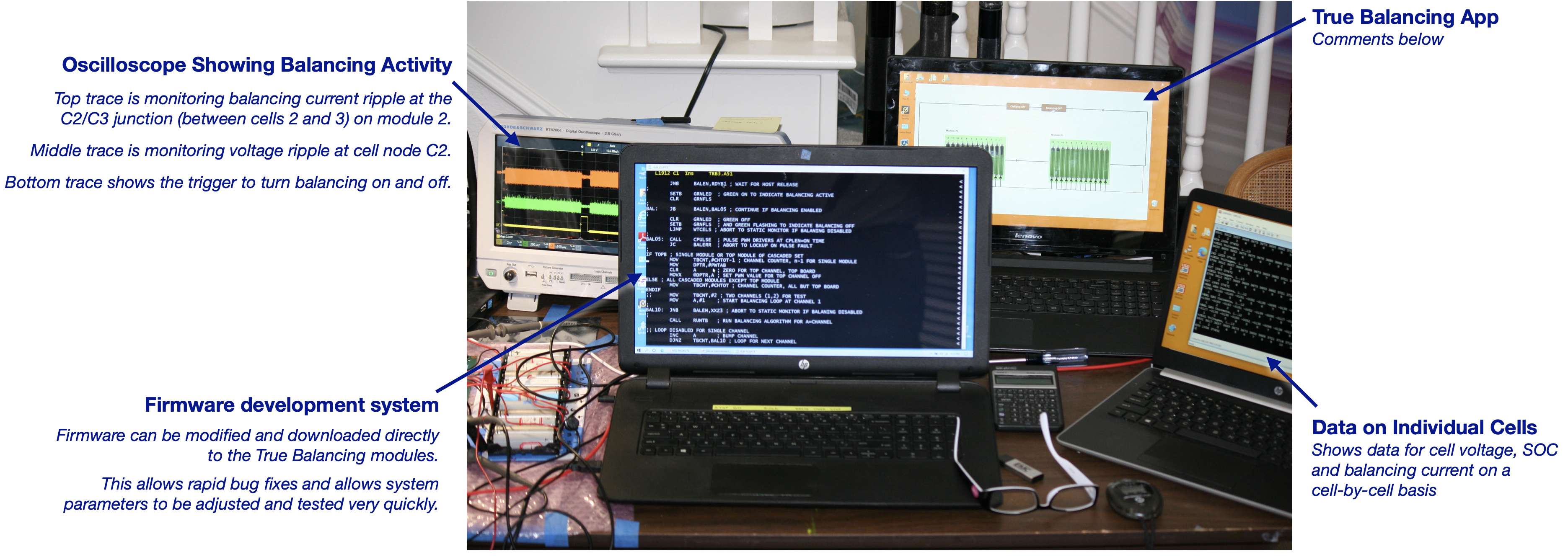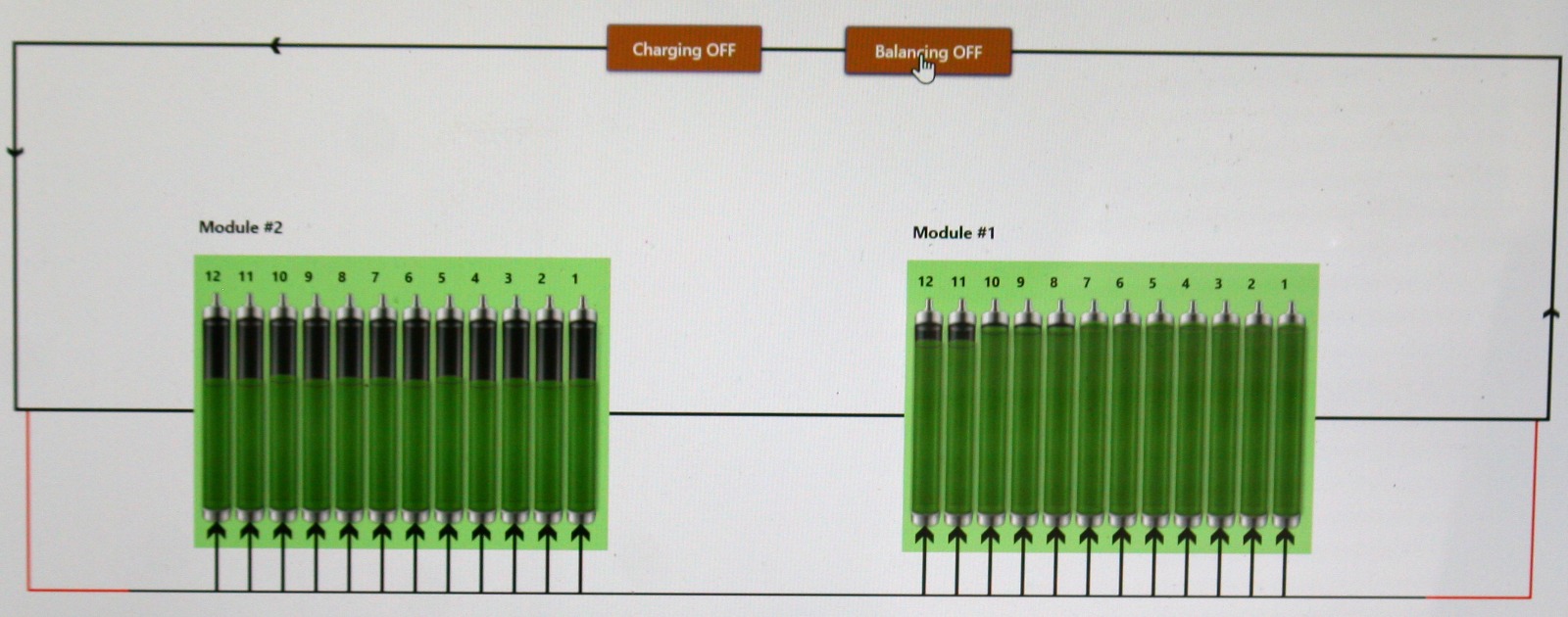TRUE BALANCING
DEVELOPMENT HISTORY
True balancing
Generation 1
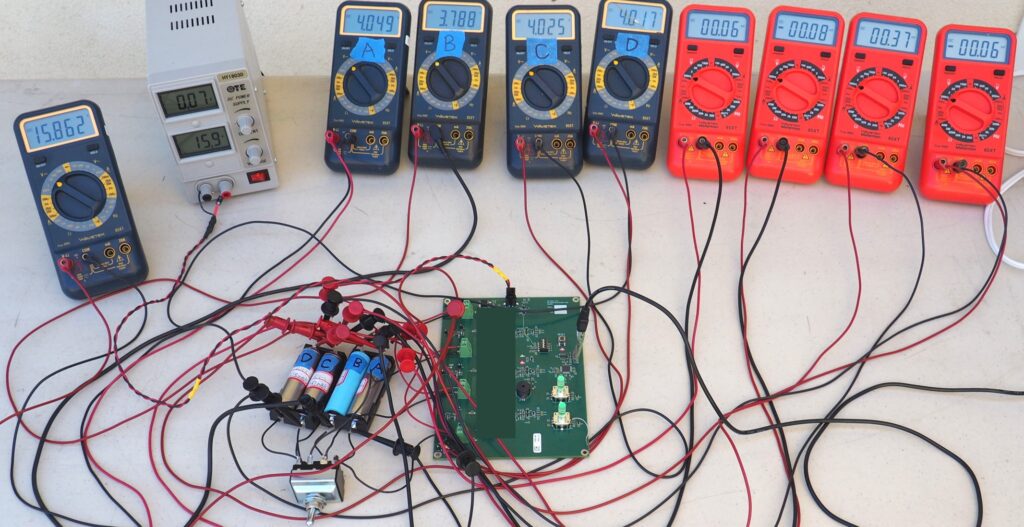
This is True Balancing Gen 1. This was the system that proved that True Balancing works on real lithium-ion batteries — in this case, a 4S1P configuration of 18650 NMC cells.
This system proved that True Balancing can balance during charge. This is the key to maximizing the amount of energy that is stored in the battery.
We discovered the first surprise benefit of True Balancing when we were running tests on the Gen 1 system.
We had just completed a test of a charging cycle to verify that very out-of-balance cells could all be brought up to 100% SOC. We turned off the charging current and started recording the test results. But we neglected to turn off True Balancing, and we saw something interesting.
The battery was discharging (because there was a load on the battery) and True Balancing was still at work, keeping the battery in balance.
We hadn’t specifically designed True Balancing to balance during discharge, but the firmware was doing exactly what is was supposed to. It was moving current from cell-to-cell to keep the battery balanced as it went down.
Balancing during discharge is the key to delivering as much energy as possible to the load. This is what really maximizes battery capacity.
This was the first of a string of unexpected discoveries about the capabilities of True Balancing.
True balancing
Generation 2
True Balancing Gen 2 supports a 4S2P configuration of 18650 cells. Gen 2 eliminated the need for external multimeters and external power supplies. We added an LCD that shows the SOCs of the cells in real time as they are being charged and balanced.
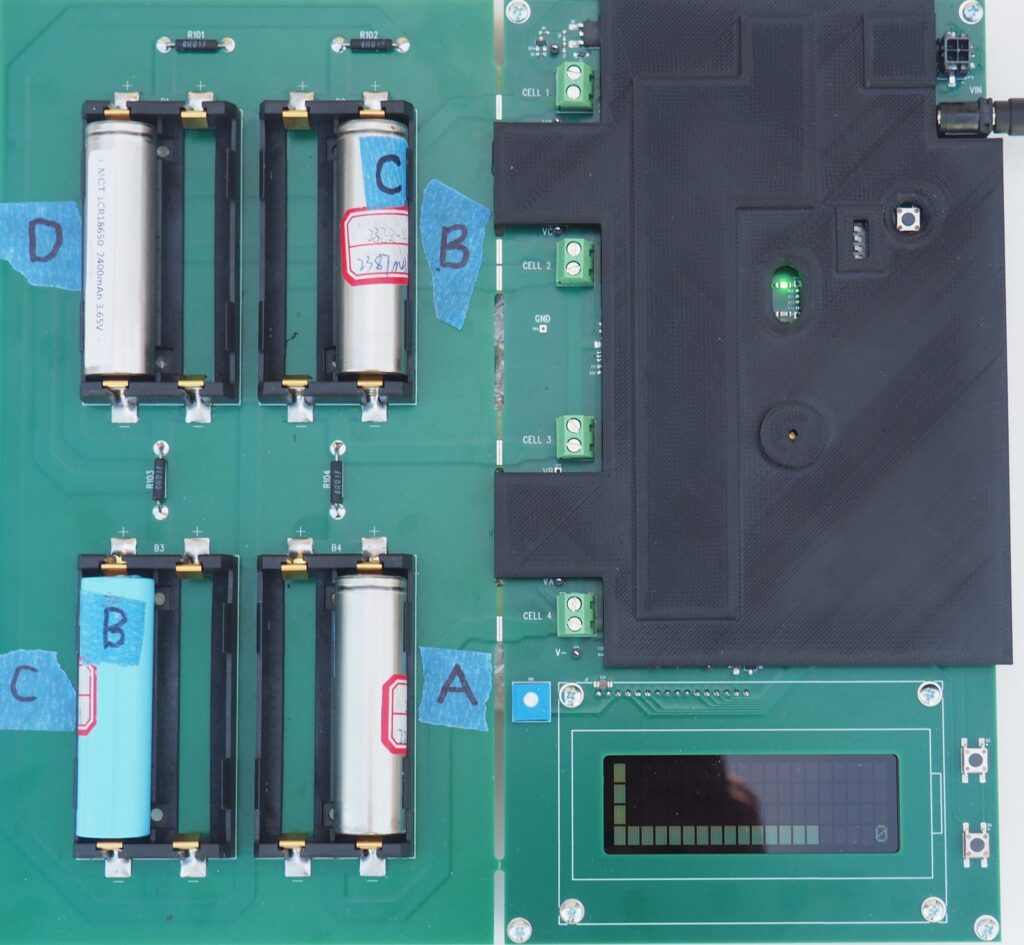
An advantage of Gen 2 over Gen 1 is that it’s portable. It can be carried on airplanes and it can be set up on a tabletop in about 2 minutes.
We brought the Gen 2 system to meetings with battery manufacturers and EV manufacturers, where we gave demonstrations of True Balancing in action.
The response we received during these demonstrations reaffirmed our belief that True Balancing solves one of the last big problems in lithium-ion battery management.
Some of the people who saw the Gen 2 system pointed out advantages of True Balancing that we weren’t aware of. We added these to our list of benefits of True Balancing.
Gen 2 is a good tool for demonstrating True Balancing and getting feedback about the capabilities of True Balancing.
True balancing
Generation 3

True Balancing Gen 3 is a big step up from Gen 2.
It consists of modules that manage charging and balancing of 12 cells in series.
To make bigger battery packs, the 12-cell modules can be connected in series to manage batteries with 24 cells, 36 cells, etc.
Gen 3 also supports real-time data collection.
With Gen 3, we can run tests on larger battery systems and collect hard data on the status of the cells throughout the steps of charging, discharging and balancing.
The pictures below illustrate key features of Gen 3.
True balancing
Gen 3 – True Balancing App
The True Balancing app provides a real-time graphic representation of the SOC of each cell, indicated by the height of the green bars.
In this instance, all of the cells in module #2
are at about 65% SOC.
Module #1 is almost fully charged.
Cells 11 and 12 are at about 90% SOC.
Cells 8, 9 and 10 are at about 99% SOC.
The remainder of the cells are at 100% SOC.
Note: This is not the final version of the app. This image was taken while the app was still under development.


